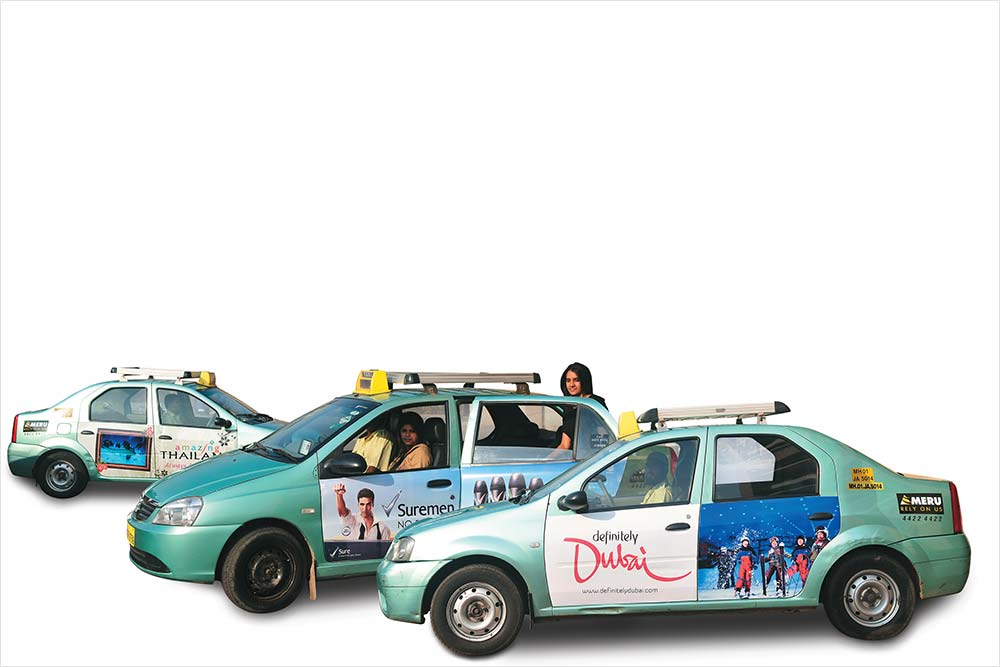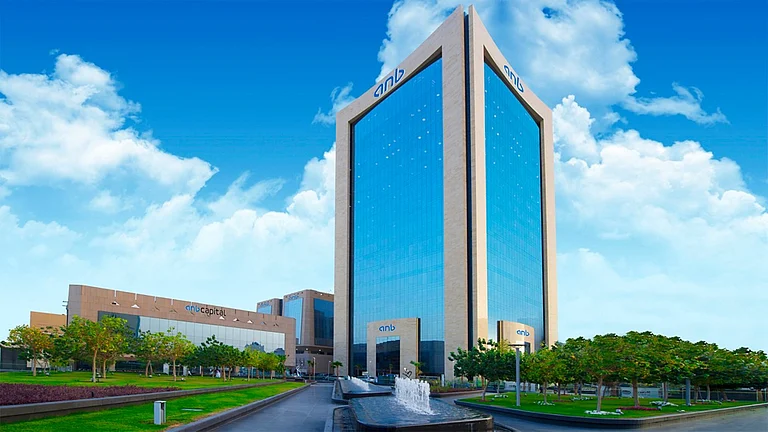As you settle into a Meru cab, and the driver turns on the meter, an automated voice alerts you to not drink and drive. The message is repeated once more when the meter is turned off. That is Pernod Ricard, the alcoholic beverage company, welcoming you into the world of cab advertising. It’s a mode of advertising that gives brands the opportunity to target a captive audience. And radio taxi companies such as Meru Cabs and Easy Cabs are making the most of it. It’s all very innovative, as the brand managers of chocolate maker Mars will testify.
If you’re in a Meru cab in Mumbai, don’t be surprised when you hear a voice message saying ‘Hunger driving you nuts? Grab a Snickers...!’ “Cabvertising” allows brands to target an affluent captive audience at relatively economical rates. It includes advertising within the vehicle, through voiceovers and LCD screens, and outside, on the body of the vehicle. Some brands use cab companies to hand out samples to passengers. The cab companies track the reach of the ad, in terms of number of times the voice-over is played, or the number of samples given, and are paid on that basis.
Meru Cabs began cabvertising right from its launch in 2008. It has partnered with 40-50 brands, including Snickers, Digene, Nature Valley and Godrej. It has a fleet of 5,000 cabs and ferries a million passengers in a month. Rival, Easy Cabs, got into the game one and a half years ago, and has about 50 brands advertising on its 2,500 cabs.
Advertising revenues are still a small percentage for both companies, accounting for 5% of total revenue for Meru, and a negligible share for Easy Cabs. But, since the additional cost is very low, these revenues go straight to the bottom-line, making it a lucrative proposition.
“With passengers spending up to 45 minutes in the cab, there is a fair amount of play that the advertiser can have with the target segment,” says Gavin D’abreo, Executive Vice President (Operations), Sales & Marketing, Meru Cabs.
For a brand such as Nature Valley, which makes granola bars, this was the perfect outdoor medium. “Our biggest challenge was to get people to try the product because the category was non-existent in India,” says Manas Barpanda, Brand Manager, Nature Valley. Using Meru cabs’ counter in the airport to distribute samples, the company tapped into its target audience: corporate travellers and people-on-the-go.
Easy Cabs installed LCD screens 3-4 months ago (only in Mumbai). Clients such as The Economist advertise through the LCD screens, which are fitted into the head-rest of the front seats, much like in an aircraft. Passengers can choose to watch news or Bollywood gossip. Over a 45-minute period around 3-4 ads flash on the screen. “It is non-intrusive and the customer can switch it off if they are not interested,” explains Manish Trehan, COO, Easy Cabs.
As this medium is cheaper than traditional media and the audience largely comprises affluent people, it makes a compelling case for brand managers to harness it. Meru charges about ₹6,000 per month per cab for advertising on 100 cars (internally and externally). It charges up to ₹10,000 for sampling (this includes ads in and on the car). Rates vary with each city, with Mumbai being about 25% more expensive than Hyderabad, where it costs the least.
“The cost of advertising on cabs is a small fraction when compared to traditional media [on a per ad basis]. Considering the cost crunch, this is the best-available medium,” says Trehan.
However, Barpanda believes cabvertising alone isn’t enough. Nature Valley spent about 15-20% of its total advertising budget on this medium, but the granola bar maker, like others, still relies on traditional media. Kinjal Medh, COO of ad agency Draftfcb Ulka, agrees. “It is more of a secondary medium; it can be important for products that need more attention or a better target profile. Also, this cannot have a direct impact on sales as the number of people you can impact is limited.”
It’s still a new mode of advertising in India and cab companies are yet to find its boundaries.
Innovation is the norm. Meru, for instance, is looking to introduce location-based ads, wherein as the cab passes a particular store, the GPS system triggers an ad, inviting the passenger to visit the store. It’s all happening in there.












 Just one email a week
Just one email a week